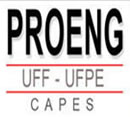Objetives
The project aims to establish networks of academic cooperation between the Department of Mechanical Engineering and the Graduate Program in Mechanical Engineering at the UFPE, and the Graduate Institute of Mechanical Engineering and the Computer Institute at the UFF, allowing the production of scientific and technological research and the formation of human resources in post-graduate level in the subject.
Computer-aided diagnosis is defined as a diagnosis made by a specialist (e.g. the radiologist in the case of medical images originating from X-ray emission), using the result of computer analysis of images from inside the human body as an aid to diagnosis. The purpose of the computer-aided diagnosis is to improve the accuracy of the diagnosis, helping the doctor, never replace it. The mining or extraction of knowledge from images is one of the main challenges. The challenge of using data mining techniques in images is large, first because of the complexity and volume of data stored in the main collections and the second by the need to do this efficiently. In the case of detection in medical imaging the complexities increase, because the training data files, from the various forms of medical equipment, are massive and extremely complex, differentiated and unbalanced. In this sense, the objective is to adapt the current mining techniques for images.
The main part of the work will focus on general aspects of organization of the database so that it can later extract the information for the analysis of the various types of medical images, processing them and finding ways to combine features, attributes and patterns for use in the various types of medical imaging. This first step will be developed jointly by the two groups.
This step will be developed jointly by the two groups. are detailed below. The second part will be concentrated on studies of the main techniques of image processing, numerical methods, computer graphics and artificial intelligence in order to adapt them to the medical field and aspects of the analysis in question. This last part will continue with the work of doctoral students of the two partners, who together with the teachers involved, constantly make field work in both institutions, for system implementations, meetings with teams of physicians and use of the equipment of each institution.





